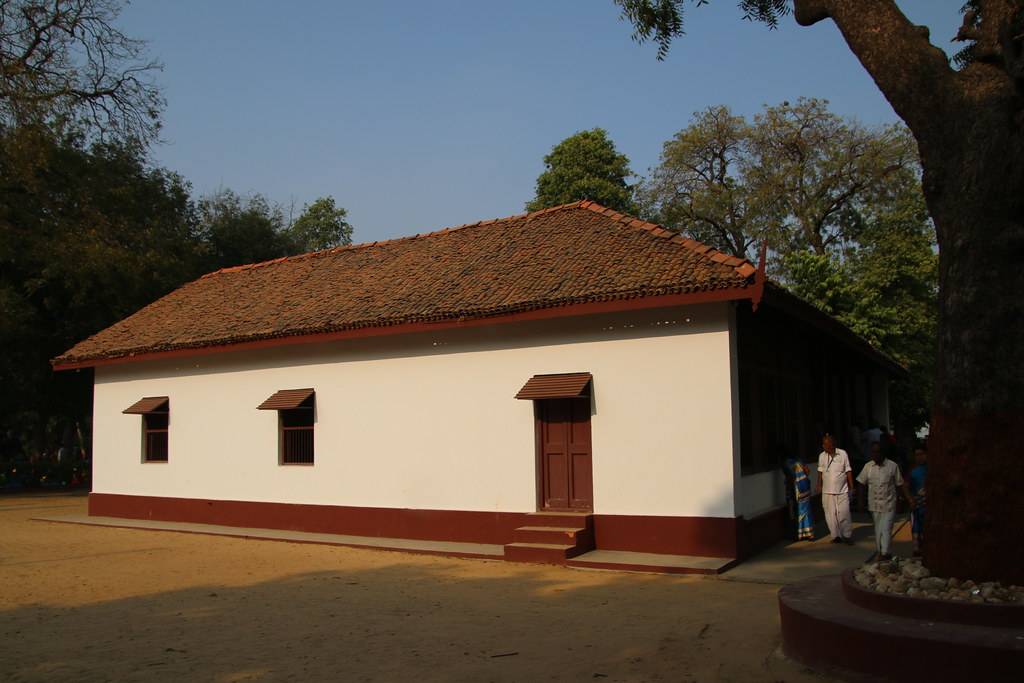Sabarmati Ashram: Nestled on the serene banks of the Sabarmati River in Ahmedabad, Gujarat, Sabarmati Ashram stands as a hallowed ground that echoes the footfalls of Mahatma Gandhi, the father of the nation. This humble abode, also known as Gandhi Ashram, played a pivotal role in shaping the course of India’s freedom struggle and stands as a living testament to the Gandhian principles of truth, non-violence, and self-reliance.
“Sabarmati Ashram, a sacred retreat on the banks of the Sabarmati River, holds the essence of Mahatma Gandhi’s non-violent struggle for India’s independence. Immerse yourself in the tranquil surroundings where Gandhiji lived and developed his philosophy of truth and non-violence. Explore the museum, witness the humble Hridaya Kunj, and connect with the historical roots of India’s freedom movement at Sabarmati Ashram.”
Historical Origins: Sabarmati Ashram
Established in 1917, Sabarmati Ashram was Mahatma Gandhi’s residence for over a decade and served as the epicenter of his experiments with truth and non-violence. The ashram was founded with the aim of promoting simple living, self-sufficiency, and communal harmony, embodying the principles that would later guide India to independence.
Gandhi’s Living Quarters: Sabarmati Ashram
The ashram consists of several quaint buildings, including Hridaya Kunj, Gandhi’s personal living quarters. Visitors can explore the Spartan rooms where Gandhi and his wife, Kasturba, lived, gaining insights into their frugal lifestyle and commitment to simplicity.
Spinning Wheel and Khadi: Sabarmati Ashram
At Sabarmati Ashram, Gandhi promoted the use of khadi (hand-spun, handwoven cloth) as a symbol of self-reliance and a means to boycott foreign goods. The charkha (spinning wheel), a ubiquitous presence at the ashram, became a potent symbol of the Swadeshi movement, reflecting the idea of economic independence through cottage industries.
Dandi March:
One of the most iconic events associated with Sabarmati Ashram is the Dandi March of 1930. Mahatma Gandhi, along with a group of followers, embarked on a 240-mile journey to the Arabian Sea, symbolically breaking the salt law imposed by the British. The Dandi March became a turning point in India’s struggle for independence, mobilizing masses and drawing global attention to the nonviolent resistance led by Gandhi.
Gandhi Smarak Sangrahalaya:
The ashram houses the Gandhi Smarak Sangrahalaya, a museum that preserves and displays artifacts related to Gandhi’s life and the freedom struggle. Exhibits include letters, photographs, and personal belongings, providing a comprehensive narrative of the Mahatma’s journey and the collective efforts of those who joined him.
Upasana Mandir:
Upasana Mandir, an open-air prayer ground at the ashram, served as a space for communal prayers and contemplation. It reflects Gandhi’s emphasis on the spiritual aspect of the freedom struggle and his belief in the transformative power of prayer.
Community Outreach and Education:
Sabarmati Ashram continues to play a vital role in promoting Gandhian values and principles. It serves as an educational center, welcoming students, researchers, and visitors from around the world. The ashram actively engages in community outreach, fostering programs related to education, health, and sustainable living.
Cultural Heritage:
The ashram is not merely a historical relic; it is a living cultural heritage site that inspires generations with the spirit of non-violence and social reform. The simple yet profound teachings of Mahatma Gandhi resonate through the ashram’s serene surroundings, creating a space for reflection and introspection.

Conclusion:
Sabarmati Ashram, with its tranquil setting along the Sabarmati River, stands as a symbol of India’s resilience, courage, and commitment to the principles of truth and non-violence. It is a place where the echoes of the freedom struggle reverberate through time, inviting all who visit to connect with the spirit of Gandhian ideals and the journey towards a free and independent India.

